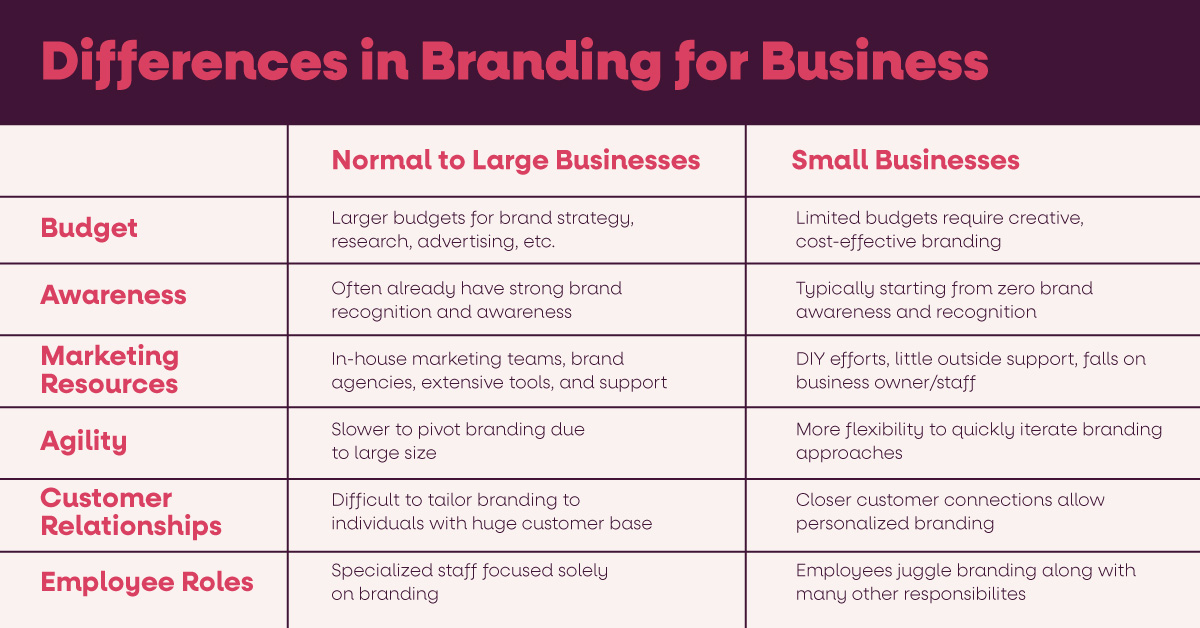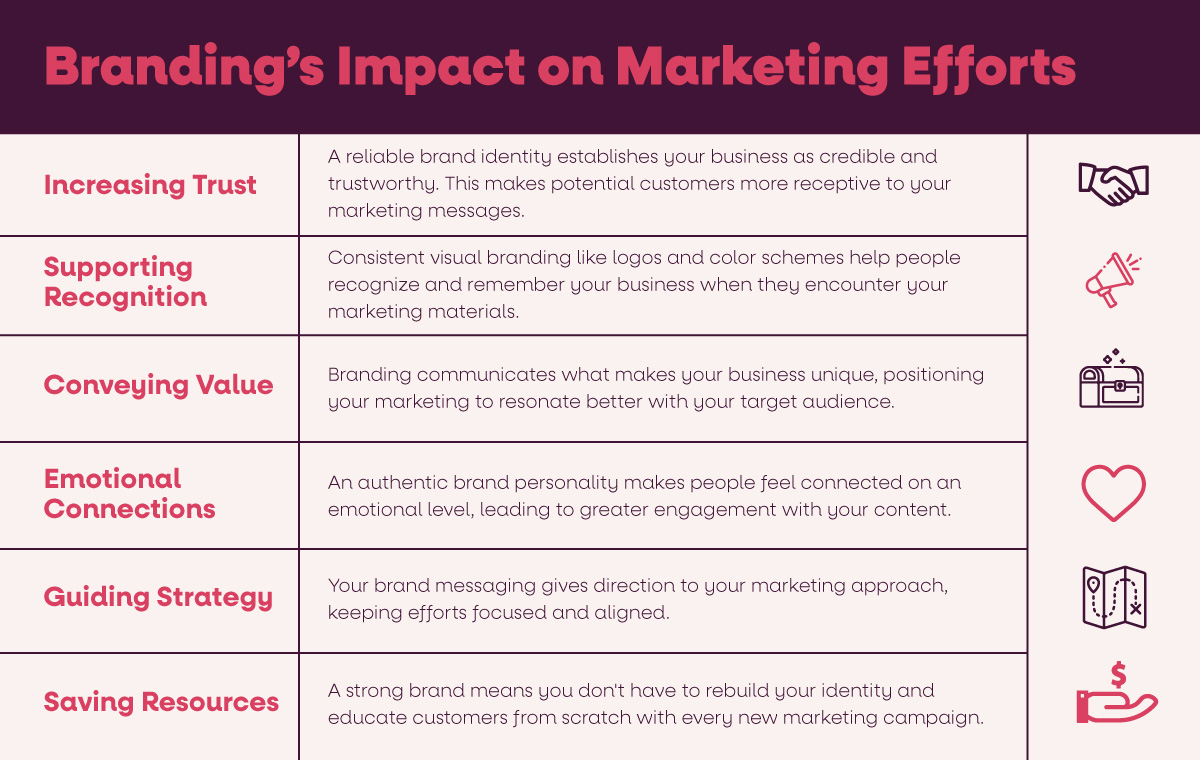
Branding goes far beyond just creating a visually appealing logo or slogan. It encompasses the essence of your business, the values it stands for, and the emotional connection it forms with your target audience. A strong brand can differentiate your small business from competitors, build credibility, and foster customer loyalty.
But that’s not to say all branding is created equal. If you’re a small business owner or marketing manager, it can sometimes feel like the playing field is tilted against you compared to larger businesses with larger budgets. Let’s uncover the basics of small business branding and how to create awareness and recognition that rivals the big dogs.
How does branding differ for small businesses?
For the most part, branding best practices are similar regardless of company size. However, small businesses do face some unique challenges and constraints when it comes to branding:

Branding on a small business budget
Branding is crucial for any business, but small businesses often have limited resources for branding efforts. The good news is you don't need a massive budget to build brand awareness and loyalty. With some strategic planning and consistency, you can establish a strong brand that resonates with your target audience.
Use the following steps to bolster your brand without breaking the bank:
1. Define your core brand messaging
Before anything else, take time to define your brand messaging. This includes your mission, values, personality, and tone. Having a clear purpose and point of view will make your messaging and visual branding cohesive. Consider what makes your business unique and how you want your customers to think and feel when engaging with your brand.
2. Research your target audience
Get very familiar with your ideal customer avatar or personas. Understand their needs, pain points, and values. This will allow you to craft branding that speaks directly to them. For example, if your brand targets busy young professionals, your messaging should focus on efficiency and convenience.
3. Analyze your competition
Do an audit of competitors and similar brands in your space. Figure out what you do better or differently to stand out. You won't grab attention if your branding is too similar to others, so come up with a unique value proposition and positioning.
4. Get your branded ducks in a row
Consistency is key to making an impact. Make sure your branding is integrated across your website, product packaging, office signage, uniforms, marketing materials, and more. Consistent branding boosts recognition and trust.
5. Engage with your audience
Get creative with ways to involve your audience with the brand. Share behind-the-scenes content on social media. Run contests for user-generated content. Offer swag or promotional items featuring your branding. When customers proudly display your brand, it amplifies your reach.
6. Track and measure success
Set measurable goals and benchmark your current brand awareness. Survey customers on brand perceptions and track metrics like website traffic and social media followers. Comparing this data over time will reveal if your efforts are moving the needle.
Great marketing starts with great branding
What comes first — the chicken or the egg? The same question can be asked of branding and marketing. While they’re both closely related, each has its distinctions, but you can’t start marketing until you’ve clearly defined your brand.
Branding vs. marketing
While branding establishes your business' identity, essence, personality, and reputation, marketing refers more specifically to tactics for promoting products or services and acquiring customers.
Many small businesses make the mistake of focusing on marketing tactics before having a solid brand foundation. While marketing drives short-term results, branding is an investment in your long-term success. When you take the time to develop a robust and consistent brand, your marketing becomes much more effective.
How does branding impact marketing?
Here are some of the ways great branding leads to successful marketing.

Rather than treating them separately, innovative businesses intertwine branding and marketing strategies to maximize results. When branding comes first and sets the foundation, marketing has something solid to build upon.
How to start building a small business brand
Branding for a small business comes down to nailing your brand strategy and executing it consistently at every touchpoint. With some elbow grease and creativity, small businesses can develop a recognizable brand that fosters customer loyalty.
So, how do you create messaging that builds awareness and shapes the identity of your business?
Well, you can start by answering a few simple questions. Download our free Build Your Brand messaging guide below to uncover the truth behind your tone.

